Max would like to concentrate further on dinosaurs, so we may tackle this at another time. We did not focus on them all that much. However, he did learn about the classification system of plants and animals (the order of living things) and how scientists name things in our environment. A little introduction to Latin here, too.
During this unit study we covered literature, science, math, geography, language arts, history in a big bang way, vocabulary and spelling and some art, music and karate. Max takes karate lessons twice a week and also has begun to mess around on the drums. The only component I feel we need more of is writing, so I'm trying to come up with clever ways to incorporate that into his week. He does work on cursive handwriting (I know, people say it's a dying subject), but I'm convinced that practicing with your hands and fingers in fine motor movement is good for your brain. We'll move to typing later on. So, here goes......
**CLICK ON PICTURES TO LINK TO FURTHER INFORMATION**
Hunt for the Last Cat by Justin Denzel (sorry, no picture or link) – a coming of age story appropriate for ages 9 and up, set in Florida in 6,000 B.C. About a young tribal boy who is battling to save his clan from Smilodon, the supposed last remaining Sabertooth Tiger. He also must convince his clan that his newly won friend, a girl from a clan that has died out due to a disease, is not an evil spirit, that she can be trusted to help them. It is a good read-aloud story. Max wrote up a summary of the book when we finished it.
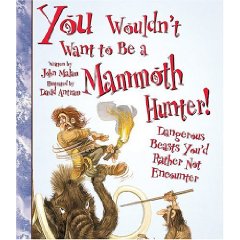
David Antram’s illustrations alone are worth reading this book. This book is packed with historical information and some pretty zany cave people.
Hannah Bonner’s book addressed the Silurian and Devonian geologic time periods, before the dinosaurs came to be. This book helps to establish a time line.
by Jo Kittinger. Full color photographs; text a little dry, but I thought it was interesting; helps to make the subject well-rounded. Contains easy to read tables of geologic time scales, old geography and the answer to the important question, “what’s the difference between a mammoth and a mastodon?”
by Fiona MacDonald. Entertaining. The article telling you how to use the whole mammoth was, well……gross. Stoneagers were not wasteful people! We could learn something from them.
by Larry Gonick. I fancy this book. Had to have our own copy, so bought it on Amazon used. There is some adult humor (even stuff I don’t get), but it’s not a big deal to skip those sentences or to explain the meaning in a different way. Humorous and well-researched.
by Patricia Lauber. Depicting the discovery of the Chaveut cave in southeastern France, and what a boon it has been to anthropologists and archaeologists as they try to piece together stone age culture and customs. Very nice pictures to accompany the text. It would be inspiring to do an art project based off of these paintings.
by Robert Mash. Charming! A pet owners guide to keeping all types of dinosaurs, which ones suit newbie owners the best, which ones to leave to the large game parks, which ones to avoid all together. It was a delightful read and low and behold, we learned some actual facts about dinosaurs and how they may have lived/acted. I liked the British author’s sense of humor very much. Wry. The pictures are fantastic.
Can’t go wrong with the Eyewitness series from DK. Good to take it in snippets of information. There is a DVD listed below that accompanies this text nicely.
Thorough resource.
History channel’s From Ape to Man examines the major discoveries that have led us to the understanding we have today, including theories that never gained full acceptance in their time, an elaborate hoax that confused the scientific community for years, and the ultimate understanding of the key elements that separate man from apes. Max liked it because it depicts the scientists, their egos and their need to be right, when in fact, sometimes they were wrong. Found this on Netflix, but it is also available in libraries.
Discovery Channel’s Walking with Cavemen dvd is GOOD. You must know that the loin cloths were optional in this movie (i.e., you will see naked people). You decide if it’s appropriate. Covers 3.5 million years from Australopithecus to Homo Sapiens Sapiens.
Goes well with the book of the same title listed above. Available at library or even at Target.
Echo: Secrets of the Lost Cavern is a virtual computer game wherein you need to use your wits to survive during the paleolithic period with a young man named Arok as your character. It’s older, so it’s cheap, especially if you can find it used.
We used one INTERNET SOURCE and that was a well-written text book about prehistoric man that is easy to follow along with. I created worksheets to accompany our reading so Max could fill in the answers as we went along. Here's the link: http://www.kids.past.com/world-history/0001-prehistoric-humans.php
As far as GEOGRAPHICAL information, in the Stories in Stone book by Jo Kittinger, there is a page depicting the continents throughout the ages and how they used to be all smooshed together into what was called Gondwanaland. We learned that the continents are still continuing to move at a fingernail’s pace. Beringia was an important concept, too. The ice bridge that formed over the Bering Strait during the last ice age allowed man to gradually populate the earth. Conceptually, I tried to teach numbers of man over time until we get to our present state of some 7 billion people on the face of the earth (yowza.) Pretty darn amazing if you stop to ponder. Getting a look at Africa and the digs that unveiled ‘Lucy’, Australopithecus Afarensis in Ethiopia helped with context as to where and when. Then we traced the supposed nomadic movements of man through the ages. Yes, I realize that some may consider this all theoretical guesswork. I’m working off of the evidence to date and of course, could dig much deeper (oh my gosh, ripe with puns). Coincidentally, the discovery of an older upright primate was recently written up in Science and Time Magazine showcased the discovery in summarized form – the magazine arrived right smack dab in the middle of this unit study.
We wrapped up the study by compiling a poster showing the progression of man over time from Homo habilis to Homo sapiens and the traits that may have differentiated them.
SPELLING AND VOCABULARY WORDS RELATED TO THE SUBJECT THAT WE WORKED ON FOR THIS UNIT STUDY:
Beringia, resin, friction, leather, marrow, weapons, wound, reindeer, prairie, geology, in/vertebrate, bacteria, nucleus, herbivore, shaman, ochre, communicate, scavenger, incisors, chromosomes, extinction, Siberia, vegetarian, hominids, boomerang, Woolly Mammoth, nomad, erect, artifact, fossil, ivory, Australopithecus, and camouflage.
ADDITIONS AFTER THE FACT:
As I run into more resources that would suit various unit studies, I'll pop in and place them under the appropriate headings. So, January 2010 I found this game:
Saw it at a natural history museum and did some research on it - it looks to be a very helpful tool in learning about geography. Amazon seems to have the best price offered; at the museum it was close to $40. On Amazon at this writing it's $23.00. For ages 7 and up, 2 to 4 players, two variations of the game. Plus, the company who makes this game, http://www.iqideas.com/ also looks like a treasure trove of great things to check out.
And......these books are too cute to resist and I wish we had known about them during this study. Even though they are written for 4-8 year olds, I think many older kids would enjoy them. Quick reads. Littlenose is a little caveboy who embarks upon many adventures and usually gets himself into trouble. He has a pet Woolly Mammoth whom he calls 'Two Eyes'. John Grant is the author of these 13 books. I was smitten with the covers and needed to know more. Will check for them at the library!
January 19, 2010 found this book by Nick Arnold - a fun look at evolution:


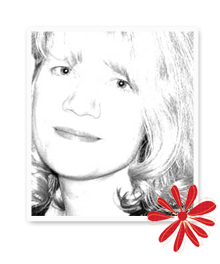











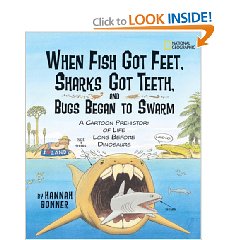
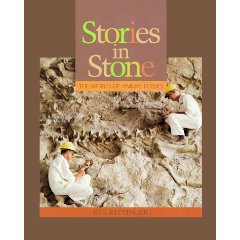
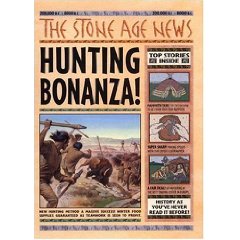
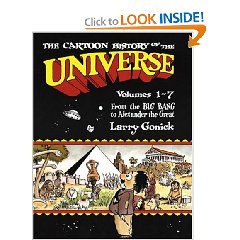
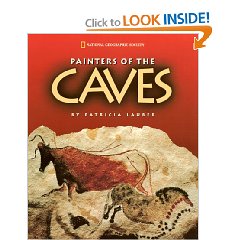
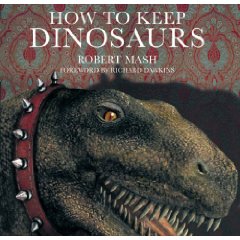
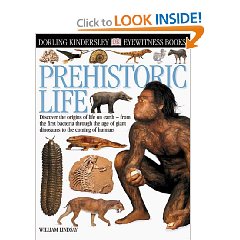

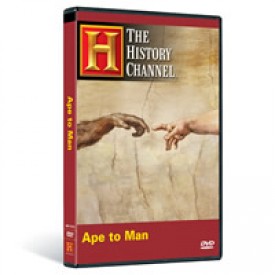
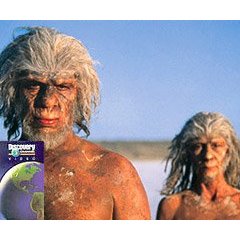


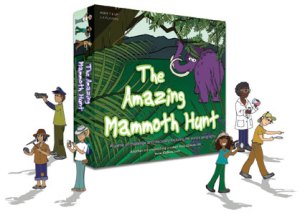
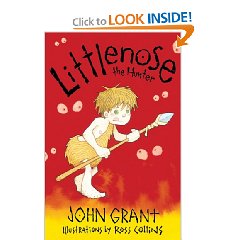
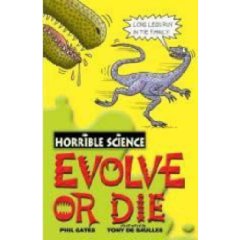




No comments:
Post a Comment